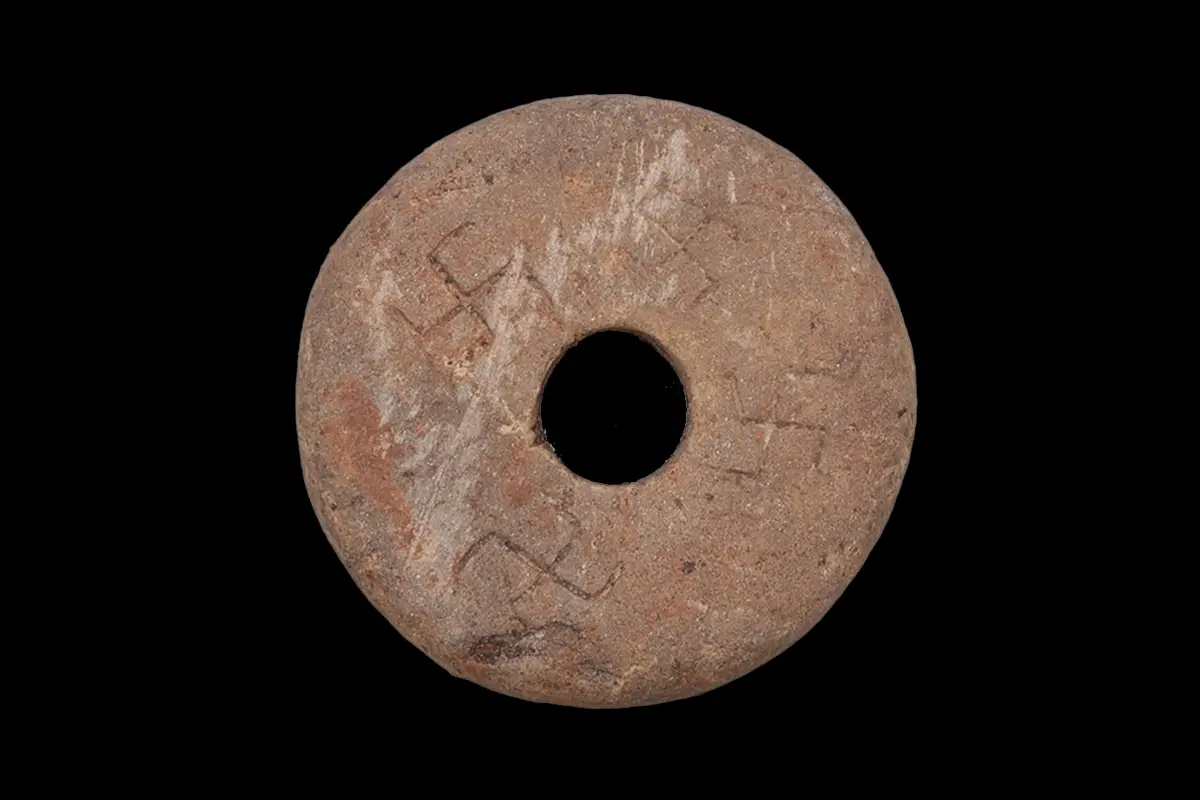Archaeologists excavating a 13th century weaving mill have found a spinning whorl marked with swastika symbols.
Excavations by NIKU in the Tønsberg Municipality in Vestfold county, Norway, uncovered the remains of a 13th century weaving mill along with a number of other weaving and textile tools.
Finds include five loom weights that belonged to a warp loom, six spinning whorls, a copper alloy thimble, a decorated object made of antler (possibly part of a woven sword), and a spinning whorl marked with swastika symbols.
The swastika is an ancient symbol used in various Eurasian religions and cultures for thousands of years. The word swastika is derived from the Sanskrit root swasti, which is composed of su ‘good, well’ and asti ‘is; it is; there is’.
In Europe, swastikas are often associated with cross-like symbols, such as the sun cross from Bronze Age religions. However, the earliest known swastikas date back as far as 17,000 to 10,000 BC.
In the early 20th century, the swastika was a popular symbol of good fortune and prosperity in Europe and North America. Unfortunately, the appropriation of the swastika by the Nazi Party is the most recognisable modern use of the symbol in the Western world today
In the context of the spinning whorl find in Tønsberg, the object is carved from red sandstone and has three right-facing and one left-facing swastikas. The whorl was paired with a handwheel, a tool used for spinning thread from both animal and plant fibres.
According to Hanne Ekstrøm Jordahl , archaeologist and project manager for the excavations in Tønsberg: “The spinning whorl was located between two floor phases in the remains of a house from the 13th century. The swastikas were carved into it in the Middle Ages.”
“Spinning whorl are a relatively common find, especially from this period. And although the swastika is a well-known prehistoric decorative element, the combination is rather special. So far, we have not been able to find any parallels to swastikas on other spinning whorl,” added Jordahl.
Header Image Credit : NIKU
Sources : NIKU







